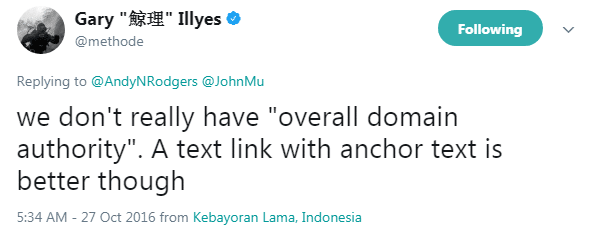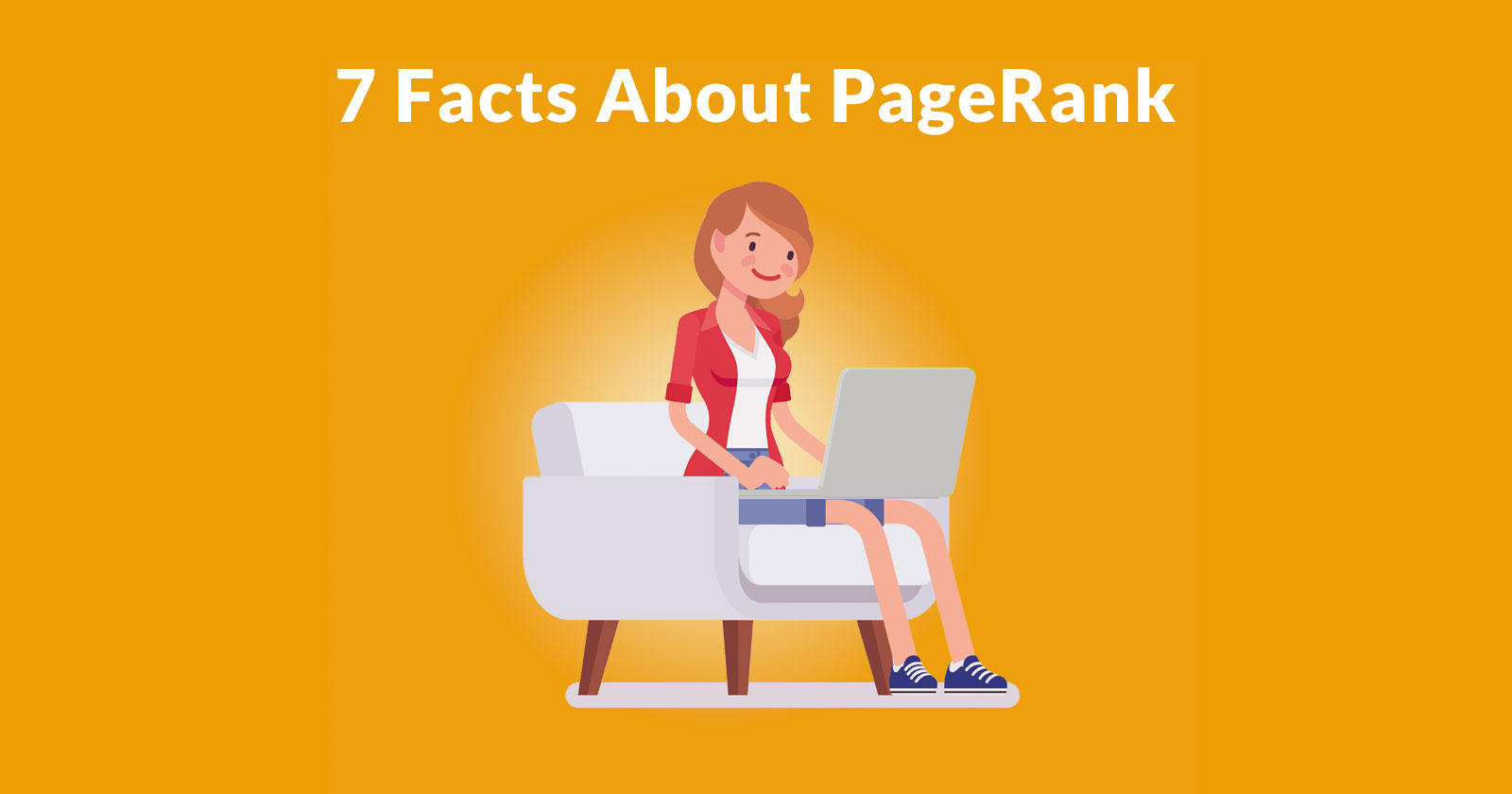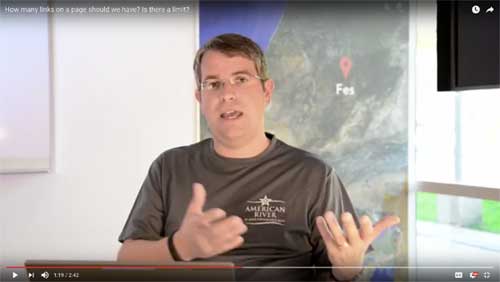There are many things that can be known about how PageRank is spread around a site and from one site to another site. And like many things about SEO there are some misconceptions. This article links to research, patents and Google statements as proof and when it doesn’t then it’ll be made clear. Here are seven interesting facts about PageRank .
1. How Much PageRank Passes from a Link?
Someone asked me how much link equity (PageRank) passes from one site to another site to another site. Well, the exact calculation is not known. But here is what we do know, although there are some caveats too.
Outlink Value is (Generally) Divided by Total Outlinks
Outlinks are another way of saying outbound links. The amount of links on a page is used to calculate how much link equity is sent to any one link. The more links on a page the less each link is worth.
But it’s not necessarily an even distribution, in that on a page with ten links, each links does not send 1/10th of link equity. Issues like if the link is in the footer can affect the amount of PageRank sent.
(Former) Googler Matt Cutts made a video about this. He is talking about link distribution in a general sense, and not in the specific where depreciation of a link might kick in.
Here is a transcript of the relevant part:
“A couple of factors to bear in mind is when you have Pagerank, the amount of PageRank that flows through the outlinks is divided by the number of total outlinks. So if you have 100 links, you’ll divide your PageRank by 100. If you have 1,000 links, you’ll divide your PageRank by 1,000. So if you have a huge amount of links, the amount of PageRank that’s flowing out on each individual link can become very, very small.”
2. Can You Use No-Follow to Control Where PageRank Goes?
The short answer is no. When no-follow came out, some white hat SEOs tried to take advantage of no-follow by no-following links to pages they didn’t care about (like the contact page or the about page). That way they could conserve their PageRank and send it to the pages they wanted to have the most PageRank. This white hat strategy is called, PageRank Sculpting.
Google’s Matt Cutts wrote a blog post and made other public statements indicating that PageRank sculpting does not work. He basically stated that all links on a page are part of the outgoing link calculation. So if you have ten links on a page and three links are no-followed, then the PageRank distribution calculation will still use the no-follow links as part of the calculation for the remaining seven links, and the number of outbound links from that page will still be counted as ten, even if three are no-followed.
3. Links Never Pass Full Amount of PageRank
Outbound links are devalued for a variety of reasons. They never pass the full amount of link equity. If there are ten links on a page, the links don’t pass 1/10th of that page’s link equity. I know Matt Cutts is on the video linked above saying 1,000 links divide the PageRank by 1,000 times. And that’s largely true. But the detailed answer is that although those links are divided by how many outlinks are on the page, how much actual PageRank flows out per link has always varied.
For example, all links are always dampened, meaning that they pass a little less PageRank than what came into a page. This is in the original PageRank paper. It’s called a Damping Factor and it’s in Section 2.1.1 of the original PageRank paper.

Some links pass more link equity, some pass less link equity. This is called a Devalued Link or a Depreciated Link. Devaluing of links is normal. Typical reasons include:
A. Relevance
How relevant the link is to the page it’s linking to
B. Position of link on a page
Links near the bottom of the page may be calculated as less important.
C. Likelihood of a link being clicked
(Ranking Documents Based on User Behavior and/or Feature Data PDF)
D. Image vs. Text Link (for example, if link resembles an ad)
This is a gray area. I don’t have citations for this. So consider this just an opinion. I feel that if the image is in the shape of an advertisement, and/or the context indicates that it is an advertisement, then the link will be construed as an advertisement and likely not pass PageRank.
One would hope that Google is smart enough to understand that if the context of the link is a page of “recommended sites” comprised of many image links, that those are genuine links and not advertisements.
E. Words surrounding the link
Words surrounding a link contribute to giving context to the outbound link. So if the context of the link (even if it’s click here) is relevant to the page it’s linking to, then it’s likely that it will pass more PageRank.
3. Link Equity (Generally) Passes from Page to Page
This is an important concept. Many people tend to think of link equity as passing from site to site. This results in the concept of wanting to acquire a link from an “authority site” which often does not correlate with an increase in rankings. You might think that a link from a so-called “authority site” might help push the dial on ranking but it doesn’t.
4. Do Links From “Authority Sites” Help?
The fact that many sites like Forbes and Huffington Post slapped no-follows on their outbound links around the summer of 2017 and the SEO industry didn’t notice a ranking change should be good enough proof that Google has a handle on “authority site guest post” links and that the concept of “authority site” probably doesn’t exist. You can search for years looking for a patent or research paper to show that Google uses some kind of authority site metric but the truth is that the concept of an authority site is based on a research paper from 1999, Kleinberg’s Hubs and Authority paper, Authoritative Sources in a Hyperlinked Environment
That is the origin of the idea of authority sites. Over the years that idea stuck around in one form or another. But know this: The idea of authority site and domain authority is not anything in use at Google as an actual metric. Yes, pages can be authoritative but as an algorithm metric, no that doesn’t exist. Gary Illyes made reference to the lack of such a metric on Twitter.

So if you want to be accurate in how you think about links, lose the idea of a site having “domain authority” because Google doesn’t have anything like that, for ranking or anything else. And forget the idea of Authority Sites because that’s based on an old research paper that has never had anything to do with Google, ever.
5.Outbound Links Have Ranking Value for Page that is Linking Out
The reason an outbound link has value is because the relevance of the site the page links to says something about that page or that section of the page. This works in reverse, too. An outbound link can have a negative ranking value if you link to a bad neighborhood.
6. When a Site Passes PageRank is it Losing PageRank?
First, it helps to stop thinking of an entire site losing an ability to rank. It’s more realistic to think in terms of pages and the inbound links associated with those pages.
Second, outbound links help a site rank. Those outbound links are ranking factors, too.
Third, PageRank is just one of many ranking factors that go into computing a page’s ability to rank. If you’re going to worry, worry about the quality of your content.
When you consider links at the page level, then you don’t really have to worry about whether an outbound link on a page is going to negatively affect the ranking ability of another page. Every page stands on it’s own. This is an important concept to internalize because that’s largely how search engines see the web.
In fact, as far back as 2004 Microsoft published a research paper about block level link analysis that went so far as to map the entire Internet not by page to page links but by section of a page to section of a page. That’s called Block Level Link Analysis. I have no doubt Google is able to do the same as well. So if the search engines can calculate rankings by page section then it may be useful to stop thinking in terms of site level ranking (or loss of ranking) and focus on the page level.
So the answer to the question as to whether a site loses ranking ability through outbound links, the likely answer is no. If a page is important it will call attention to itself by links and those links will help rank that page (as will the outbound links on that page).
7. Should all Links go to the home page?
When a home page is the major ranking page, that’s usually because most of the inbound links are to the home page. Diversify those links and begin linking to another page and you’ll see the traffic patterns begin to shift.
That’s why it’s helpful to think in terms of Page Ranking and not Site Ranking. What determines whether a web page ranks is mostly about how important (and relevant) a web page is, not how important (or relevant) a web site is. So if your home page is your most important and relevant page to users, that’s where people are going to link to and that’s probably what the search engines will rank.
Try to think in terms of pages and how those pages satisfy users and you’ll be on the right track!
Featured image by Shutterstock, modified by Author
Screenshots by Author






